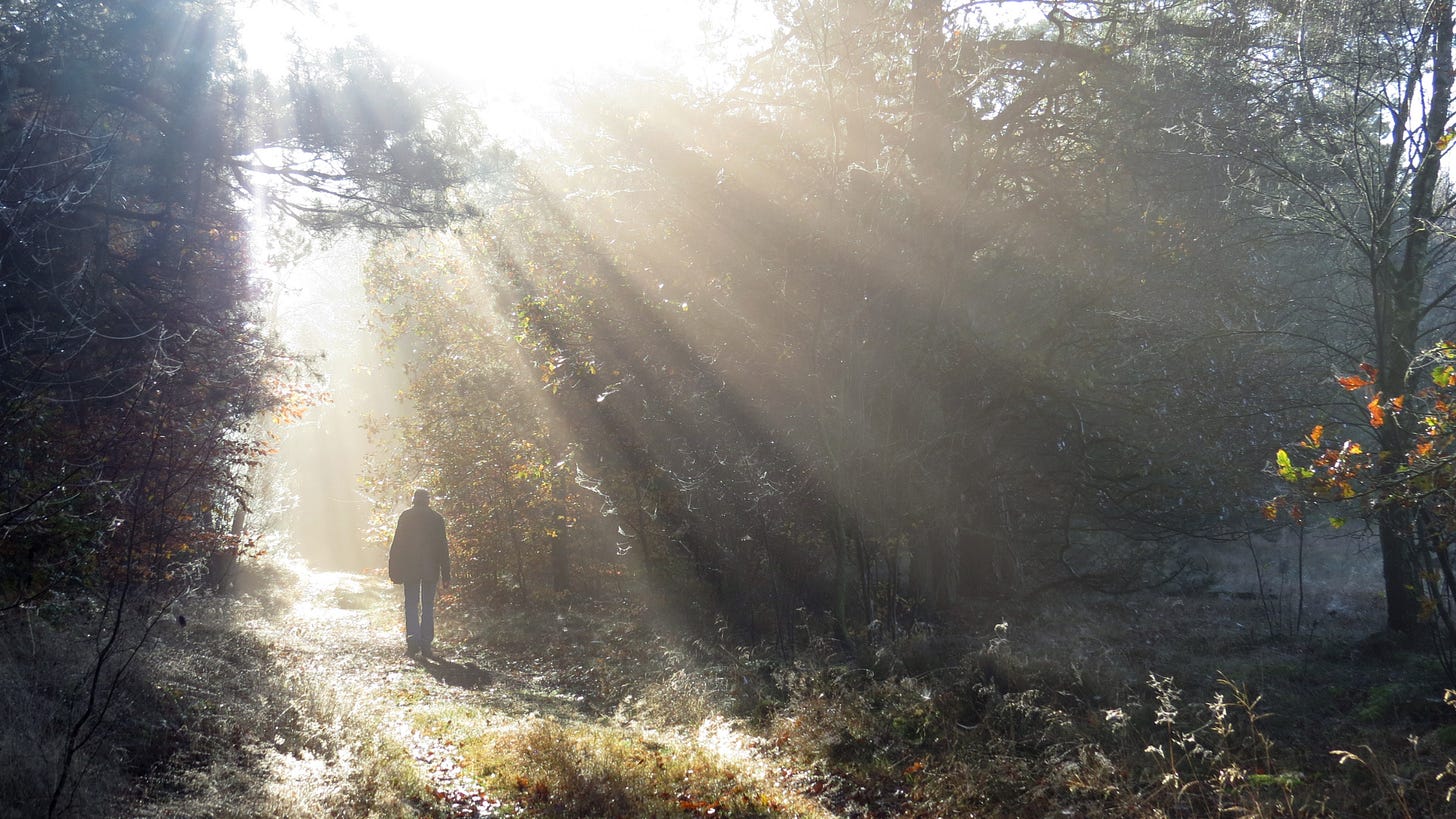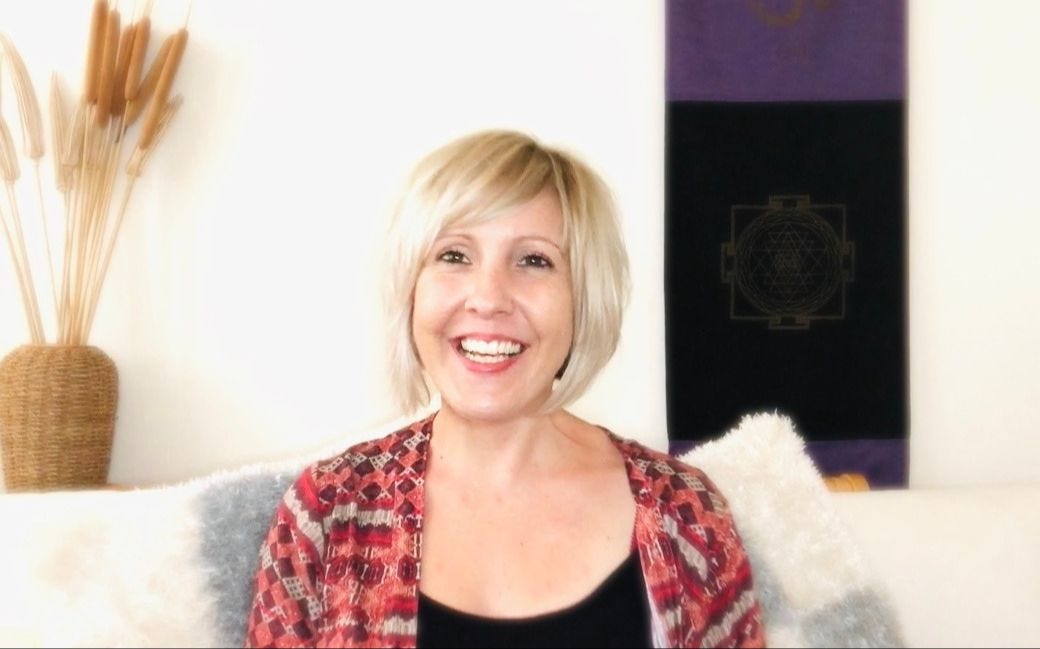Through the Broken Places: Trauma and the Self-Care System
Oct 28, 2025
Donald Kalsched, a Jungian analyst and depth psychologist, has spent decades exploring the archetypal dimensions of trauma and the ways in which challenging experiences activate deep, transpersonal forces in the psyche. His theory reveals that trauma doesn’t only cause psychological wounds but can be a catalyst for spiritual transformation, and when I first came across Donald Kalcshed’s book ‘Trauma and the Soul’, I was captivated by his writing because it was one of the first theories that really encapsulated my understanding and healing journey over the past decades.
Donald Kalsched ’s work draws on the concept of the numinous - a term coined by Rudolf Otto and one which I’ve long been curious about. Kalsched suggests that trauma often opens us up to numinous experiences, not always as blissful revelations but as encounters with overwhelming forces that seem larger than life. It’s as if, in trauma, the sacred breaks into the personal psyche as an overwhelming, often terrifying force. Another aspect that interests me is the way trauma gives us access to liminal states or spaces, thresholds between worlds, that are often more available to individuals who identify as wounded healers, shamans, shamanic practitioners, or highly sensitive people. Donald Kalsched says that the traumatised psyche lives between two worlds - the ordinary and the archetypal, the temporal and the eternal. In this liminal space, the psyche encounters both benevolent and malevolent forces that can either heal or destroy.
In Kalsched’s understanding, trauma is any experience that inflicts more pain than the psyche can consciously bear and is an injury to the capacity to feel. Gabor Mate also states, ‘trauma is not what happens to us but our response to it.’ Although we often associate trauma with major life events and crises such as the death of a loved one, there are also more subtle forms of trauma, including prolonged neglect, living in an empty or chaotic environment for long periods, poverty, emotional abuse or subtle and persistent bullying. It’s my experience that it’s not the severity of the event, but the extent to which an individual finds themselves in an environment that surpasses their capacity to cope that is of importance. When the ego cannot metabolise the intensity of an experience and when the emotions are too great and the support too little, the psyche intervenes with a protective mechanism, which is one of splitting and dissociation. Donald Kalsched explains that dissociation is not a weakness but a miracle of survival - it is an automatic, unconscious process that separates unbearable experience from consciousness in order to preserve life.
For the child who cannot escape - a part of the Self, or what Donald Kalsched calls the soul, withdraws inward, while another part ‘progresses’ into a protective part which often grows up prematurely to manage life on the outside. The psyche becomes divided between an inner child and an outer protector, which is often highly competent. This is what Donald Kalsched calls the Self-Care System. It explains so much of what we often see in those who have experienced trauma - a highly functioning individual who can achieve great success and achievements in life, however, can struggle with underlying anxiety, depression, addiction or other unhealthy coping mechanisms.
This splitting is paradoxical in the sense that it keeps the individual alive and functioning, as Bessel van der Kolk explains, ‘Dissociation is adaptive: it allows relatively normal functioning for the duration of the traumatic event and then leaves a large part of the personality unaffected by the trauma, but it comes at a terrible cost’. Over time, the protective system that once ensured survival turns against the self, becoming a persecutory inner world of self-criticism - the traumatised psyche, as Kalsched notes, perpetuates suffering and becomes self-traumatising.

Donald Kalsched studied the dreams of those who have experienced trauma and noticed a recurring pattern: persecutory figures, which often consist of dark presences that harass the dreamer. These figures were not only personal, but they carried a transpersonal and archetypal energy, so we can understand them as part human and part mythic, emerging from and carrying energies from the collective unconscious. Again, Donald Kalsched’s description of this phenomenon and the shared case studies of clients with these dreams have directly mirrored my own, which is why his work has spoken to me so much. These figures represent the archetypal face of the self-care system - the psyche’s internal guardians that protect against feeling unbearable pain. Yet in doing so, they continue to attack the self-esteem of the individual and perpetuate this cycle of pain in the individual’s psyche.
Other theorists have recognised this figure under various names; many understand it as an ‘inner critic’. In Richard Schwartz’s model of Internal Family Systems, such a figure can be understood as a manager or firefighter - a part that strives to protect the exiled parts. Although the intention is to protect, they often cause more damage because they protect through extreme or destructive mechanisms - for example, addictive tendencies, controlling, shaming, perfectionism, or relentless self-criticism.
Donald Kalsched and Richard Schwartz would agree that these protective parts must be ‘educated and transformed’ through coaching, therapy or other healing modalities. They are not evil in themselves; they are guardians of pain, protecting the individual from re-experiencing the original catastrophe. The healing process involves bringing these figures into consciousness - seeing them, dialoguing with them, and gradually allowing their intensity to soften as trust develops. When the ‘inner protector’ or self-critic begins to relax, the deeper work of integration can begin.
The Sacred Dimension of Dissociation
Donald Kalsched emphasises that even though the impact of trauma is devastating, there is also a sacred aspect - when the pain is unbearable, the psyche dissociates not only to protect life but to protect something sacred and unbroken within - the essence of the human spirit. This divine essence retreats into the deepest parts of the psyche, waiting for the right conditions of safety and compassion to re-emerge. He describes this process as a thwarted ensoulment - in other words, the natural connection between body, psyche, and spirit is disrupted. In healthy development, the soul of an individual will gradually inhabit the body through experiences of safety, attunement, and love. Through trauma, the original vitality of the person is preserved but cut off from lived experience. The individual may grow up highly functional, yet feel inwardly disconnected - as if something essential has not yet arrived.

This concept can also be understood as soul loss and is a phenomenon discussed in shamanism and shamanic practices. In shamanism, there are specific practices that can be offered to retrieve the lost soul. When the soul returns, the psyche often expresses it through dreams. This is something I have also had direct experience with - through a process of ongoing therapy and shamanic work, I eventually dreamt of myself rescuing a small girl from a burning building - I later understood it was a rescuing and returning of my inner child. Through a shamanic healing session, I also had a soul retrieval, in which I viscerally felt an aspect of myself return and land in the centre of my solar plexus.
Paradoxically, those who’ve experienced trauma can often have profound mystical experiences. The benevolent aspect of the self-care system can manifest as a helpful spiritual figure, such as an angel, guide, or protective presence. One of Kalsched’s clients, who was very ill as a child, saw an angel who offered her the choice to live or die - she chose to live, and though her life was marked by pain, she carried the enduring sense of being ‘companioned’ by something larger and loving within her. It is commonly understood across many traditions that the divine often comes through ‘the broken places’ as is shared in Leonard Cohen’s famous line, “There is a crack in everything. That’s how the light gets in.”
The journey toward healing and integrating these disowned aspects of ourselves can take time. The self-care system maintains the defences that once ensured survival by keeping the original pain out of reach. As we begin to heal, we may begin to remember or reconnect with aspects of pain, and this is an important first step. Yet getting caught up in the stories or becoming overwhelmed by the pain will not support the process. I have found the most important aspect, at this stage of the healing process, is to develop a healthy level of compassion for the protective mechanisms and parts which have been exiled. To hold them in awareness without the intention to ‘fix’, get rid of or change them. Another important part of this process is to create enough safety and grounding in our psyche and body so that we can hold aspects of the pain that we begin to become conscious of. This can happen in moments of attunement and co-regulation in therapy or coaching, and it is my perspective that being accompanied through this process with the presence of another attuned human being is necessary. Through the held space, it is possible that enough safety is found to enable aspects of the individual’s psyche to return home. It is also necessary that we learn how to shed and let go of aspects of the pain that our exiled parts have been holding. It is my experience that this can only be done through the process of grieving, so that the burdens, pain and beliefs we have been carrying can be fully acknowledged, transformed and released.
Donald Kalsched’s work offers a profound understanding of trauma as both a psychological and spiritual phenomenon. His theory shows us how the psyche responds to unbearable experiences through dissociation and the creation of protective inner systems that ensure survival, though often at great cost. These defences, while initially adaptive, can later perpetuate suffering until they are brought into awareness and compassionately integrated. Donald Kalsched’s insights, supported by related theories from Gabor Maté, Bessel van der Kolk, and Richard Schwartz, remind us that healing from trauma involves more than symptom relief - it is a process of restoring connection between the fragmented parts of the self and recovering the sacred vitality that was once lost. Through therapy, attunement, and the courage to grieve, the individual can begin to transform pain into wholeness and move toward a more integrated, soulful way of being.
About the Author
Jules De Vitto is a transpersonal coach, trainer, and experienced educator in the fields of psychology, coaching, therapy, and education. She holds a BSc in Psychology, an MA in Education, and an MSc in Transpersonal Psychology, Consciousness, and Spirituality. Jules specialises in guiding individuals through deep emotional and spiritual transformation, supporting them to align with their authentic power and life purpose. She is the founder of the Highly Sensitive Human Academy - a central hub that offers courses, coaching, articles and a podcast for Highly Sensitive People.
With a strong foundation in transpersonal approaches, Jules draws on integrative methods that honour the intersection of psychology, consciousness, and spiritual growth. She has completed Michael Harner’s Shamanic Practitioner Training through the Foundation of Shamanic Studies, as well as a Grief Ritual Leadership Training with Francis Weller. Her work is rooted in years of personal and professional engagement with transformative healing modalities.

Jules is also a published author, contributing to the Resilience book series with her title Navigating Loss in a Time of Crisis. Her writing has been published in peer-reviewed journals such as the Transpersonal Coaching Psychology Journal and the Journal of Consciousness, Spirituality, and Transpersonal Psychology, and via platforms including SAND (Science and Nonduality) and Highly Sensitive Refuge. She has been invited to speak on numerous podcasts and events on topics including transpersonal coaching, spiritual development, and emotional transformation.
In addition to her writing and coaching, Jules works on the Alef Trust Faculty as part of the 1-year certificate in Transpersonal Coaching Psychology and is the senior editor of the Transpersonal Coaching Psychology Journal and continues to contribute to the field through teaching, research, and public engagement.
